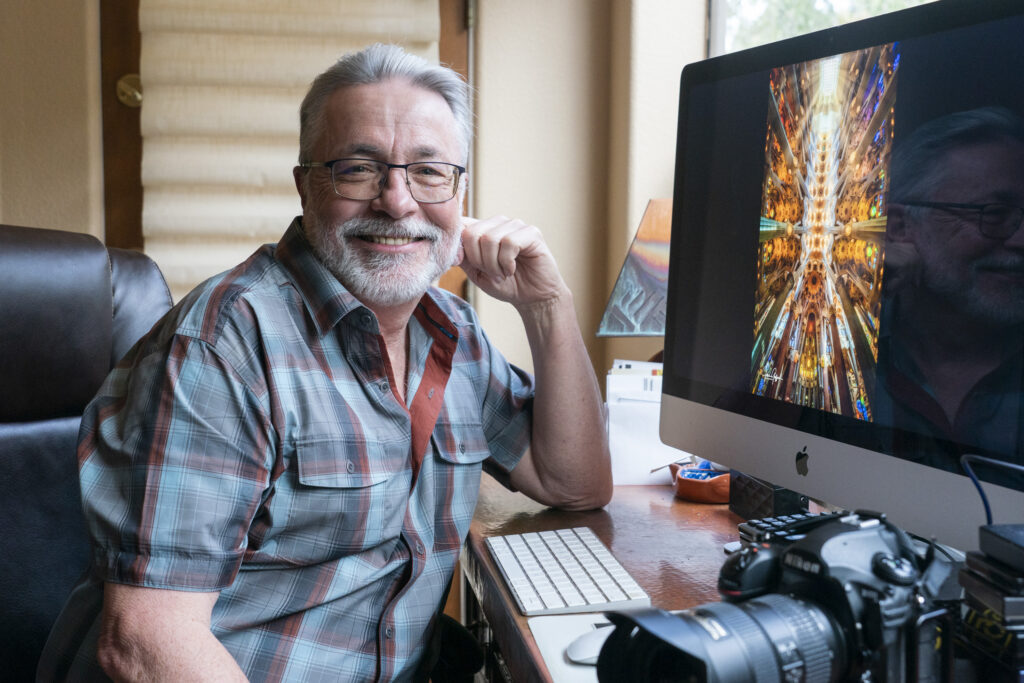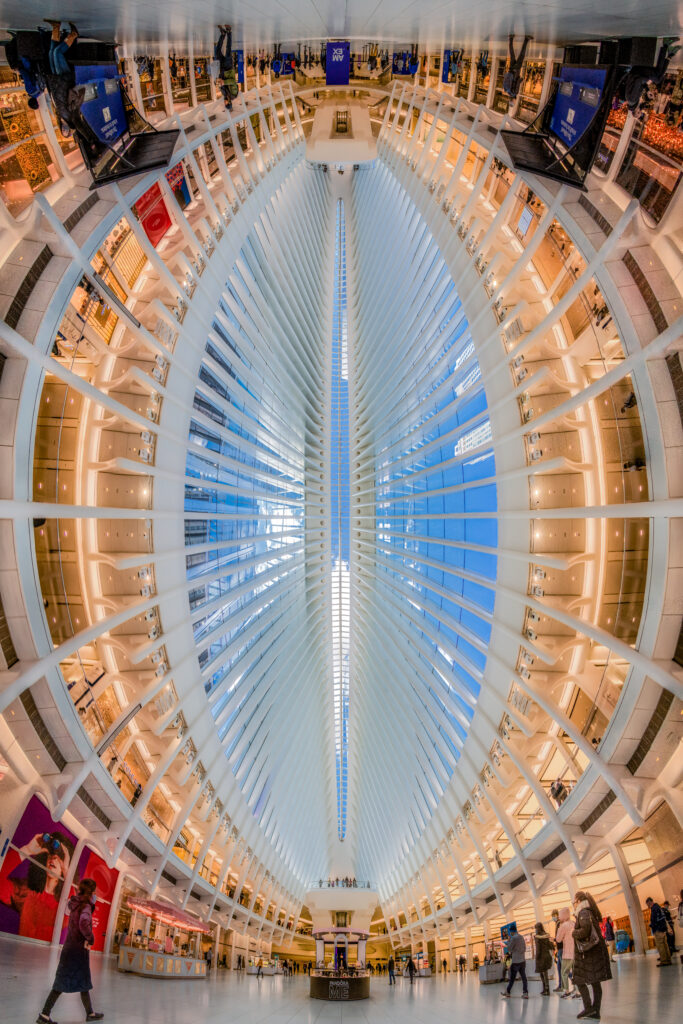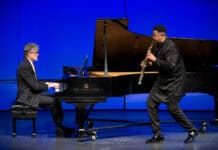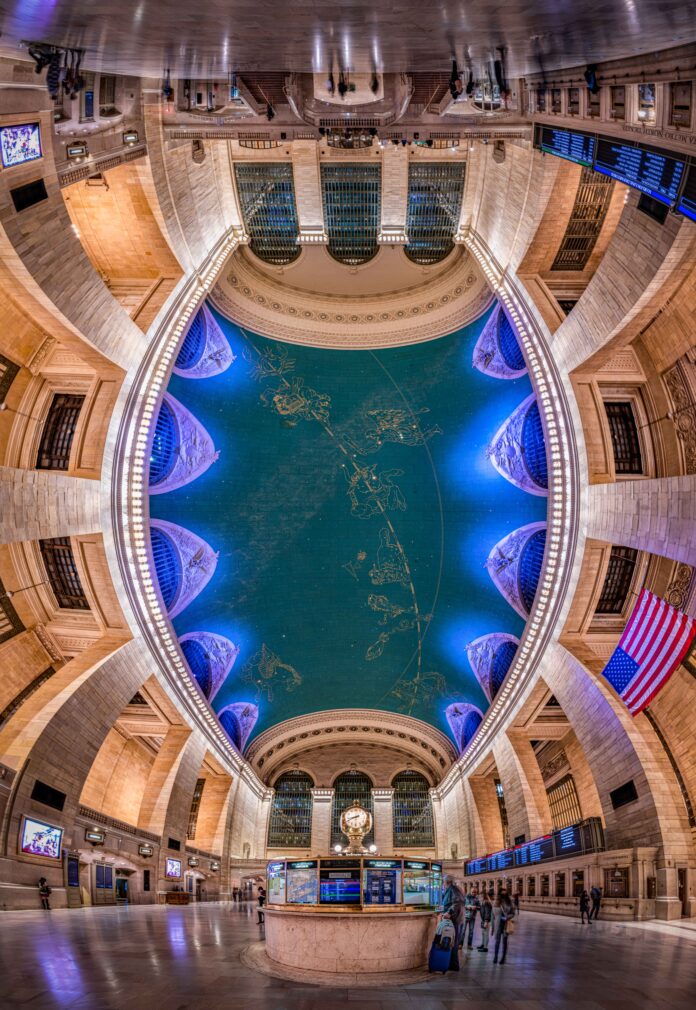The age-old adage of “a picture is worth a thousand words,” attributes that a single image can convey an idea more effectively than a verbal description. Such is the case in the artistic photographic work of John Gafford.
Gafford, a Sedona resident since 2014, has traveled the world with his wife Jodie photographing historic churches, cathedrals and iconic architecture. One of his favorites places is the Chiesa del Gesù in Palermo, Sicily. According to Gafford, the Chiesa del Gesù is one of the most important Baroque churches in Sicily and was built by the Jesuits, between 1564-1633. “As we were walking around Palermo one afternoon, we happened upon this church and we almost decided not to enter,” Gafford said. “Boy, I am glad we did! It was definitely one of the most beautiful churches I have ever seen— the ceiling was quite spectacular.”
Gafford says that he and his wife love art and have found the most amazing art and architecture within the churches in Europe. “You could have a simple church with nothing on the exterior, it looks old and shabby. And you go in and it’s got the most amazing sculptures and fresco paintings you’ve ever seen.”

While Gafford became enamored with the hidden art he found within the ancient buildings in Europe and abroad, he wanted to capture their beauty in a unique and different way. “Well, every place is a little bit different. There are different styles of architecture, particularly those on the churches and cathedrals,” Gafford stated. “And they’re just from different times and different ages. But they’re all unique.” As Gafford points to photo of a ceiling in a cathedral in Barcelona, he explains its uniqueness and beauty. He says that he wanted to capture it in such a way that he could translate what he saw onto an image that would showcase its grandeur and allow the image to tell that story.
Through much research, and looking at the work of other photographers, Gafford says he discovered the technique of creating a vertical panorama photograph or “Vertorama,” which are a series of images sweeping 180° from the floor to the ceiling and ending at the opposite horizon. It is particularly well suited for grand locations like cathedrals and stately homes. This type of photography is best shot on a tripod; however, there are many public locations that won’t allow a tripod to be set up, especially in many of the old churches and cathedrals. In which case, Gafford says he has photographed these images hand-held—which is much more difficult to capture.
Afterwards, in post-processing, the photos are stitched together to create a kaleidoscope or 3D looking image. “A lot [of what I learned] was by trial and error,” Gafford said. “Some of my earlier images, I didn’t overlap them enough [in post processing] but I’ve gotten better at figuring out my technique for shooting so that when I do stitch it together, it’ll look better. I don’t know if I’ve completely figured it out yet, because it’s the way you shoot it. So if I have any doubts, I take more images and overlap them more and move my camera less. So before, I might have taken six images, now I’ll take 12-14 images.”
While discussing the art of photography, Gafford says that he never believed that he was creative, but when he got into photography, he began looking at the scenery with a different set of eyes. “Another area that I probably have grown the most is how I approach a scene. I wasn’t always sure what I wanted to capture out of it. I just knew for example, that’s a powerful looking landscape and I have to be able to photograph it. But what about it makes it powerful? Is it the shadows? Is it that one particular rock that is standing out?” Gafford explains. “And oftentimes, I just had these bland images of a wide scene until I started to focus.
Gafford says that as he began to focus, he continued to gain experience. Upon arriving at a destination, he takes a few minutes to look at the scenery, realizing that he may potentially miss a critical sunset, but that he will come back later at another time. It is imperative that he decides ahead of time, what he is trying to capture and the story he wants to convey. “I ask myself, ‘What am I trying to get out of this image? What is my story going to be?’ And so, I will oftentimes not take my camera out until I’ve walked around for a few minutes. Before I learned how to observe my surroundings, I was pointing and clicking and I never got images like I am now. I’m spending a bit more time thinking about it.”
It is Gafford’s intention to capture the moment in time, as if it was happenstance. His images engage the viewer, express a sense of grandeur and in its own right has become a work of art. “In the case of the vertoramas, the story is about the amazing art that man creates and puts inside buildings. I mean, we’re so used to thinking of an artist’s painting that you hang on the wall, or a sculpture that sits in the corner, or on a counter somewhere. But for me, art is the structure itself, because a lot of thought went into building these facilities, not only designing them so they could stand up engineering-wise, but also the stained glass, the sculptures, the frescoes—to tell the story of whatever story they wanted to tell. Most of them obviously, are religious stories, but just the art and architecture is beautiful. And just like the creativity of man, is the story that I’d like to share.”

Gafford is fascinated about the art and architecture he has discovered around the world. Through photography, it has given him a way to express that beauty, so much so, that the way in which he photographs his images has become his signature statement. “If you think of art, Van Gogh, has a certain style and I can tell a Van Gogh when I see one of his paintings. It’s the same way with photography. I can go online and look at an image by a photographer and tell who it is by their style or perhaps it has a certain glow to it. That’s what I’m trying to capture – a certain style and look especially with my vertoramas.
On a recent trip to New York City, Gafford attended a photography workshop on architecture. It also gave him the opportunity to photograph iconic buildings such as Grand Central Terminal, the Oculus, which is the World Trade Center Transportation Hub and designed by architect Santiago Calatrava, Rockefeller Center as well as several other landmarks around the city. Some of his images were shot with a new fish-eye lens that he uses on his Nikon D850 while others were vertoramas – that he shot on a tripod, after getting permission — in advance — to shoot at those locations.

Gafford says that he is an amateur photographer—at an advanced level—but not a professional, since he doesn’t sell his work. What started as just taking photos on family vacations, and of his son growing up, has turned into an art form during his retirement. Gafford is a member of the Sedona Camera Club. He says when he joined in 2014, he was immediately recruited to the board. Since then he has served as president, treasurer and most recently secretary. “I’ve enjoyed [being a part of the camera club] it’s helping me learn more about photography, but it’s also about giving back to the community by helping others who want to learn more about photography. And so I’m really proud of what the camera club does here in Sedona,” Gafford said. “We have over 150 members and they’re all levels of expertise. So it’s nice to be with a group of people that share the same passion and enjoyment.”
As Gafford begins to plan his next excursions to places in Spain, Ireland, Scotland and Italy, you can be sure that he is researching the area and locating interesting places to photograph. With each click of his camera’s shutter, you can bet that the images he captures will not only tell a story about the place, but more importantly, the artist— in this case—the photographer, who created it in his signature style.



















